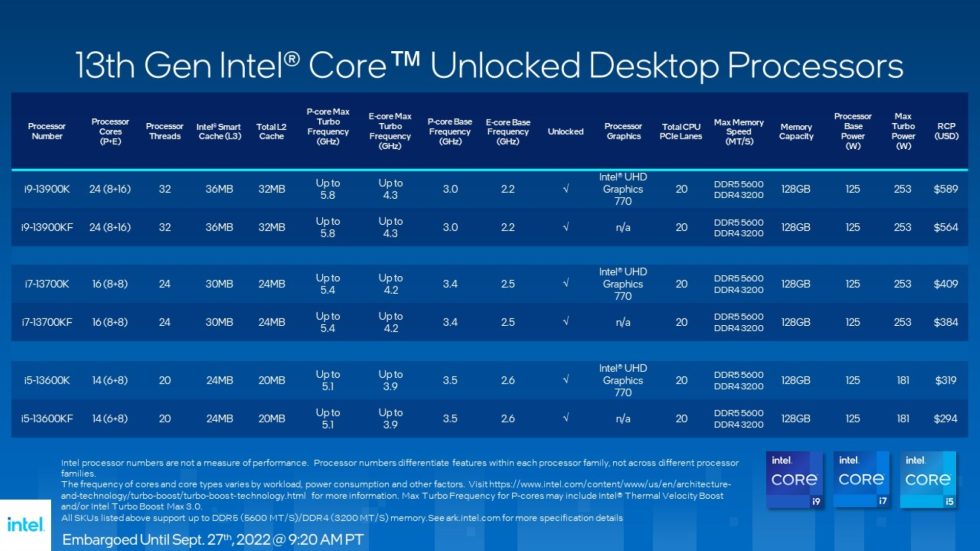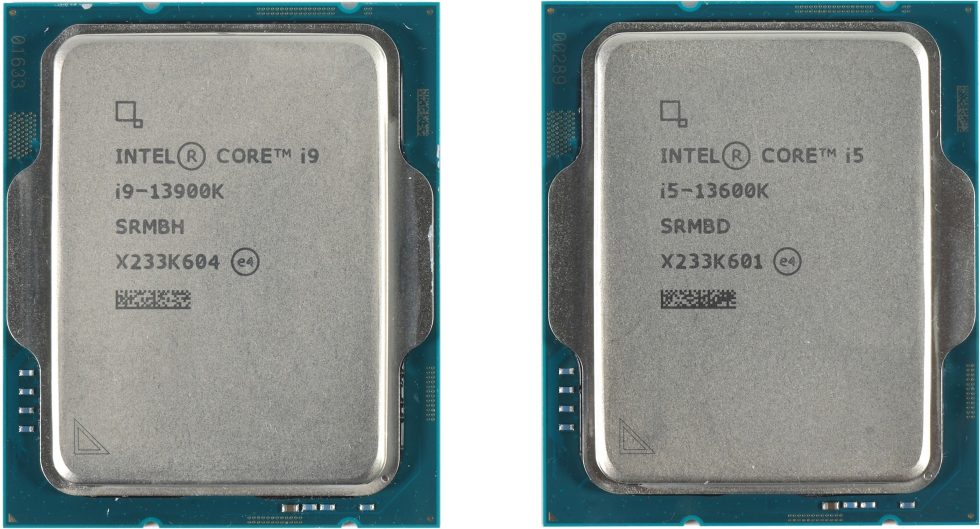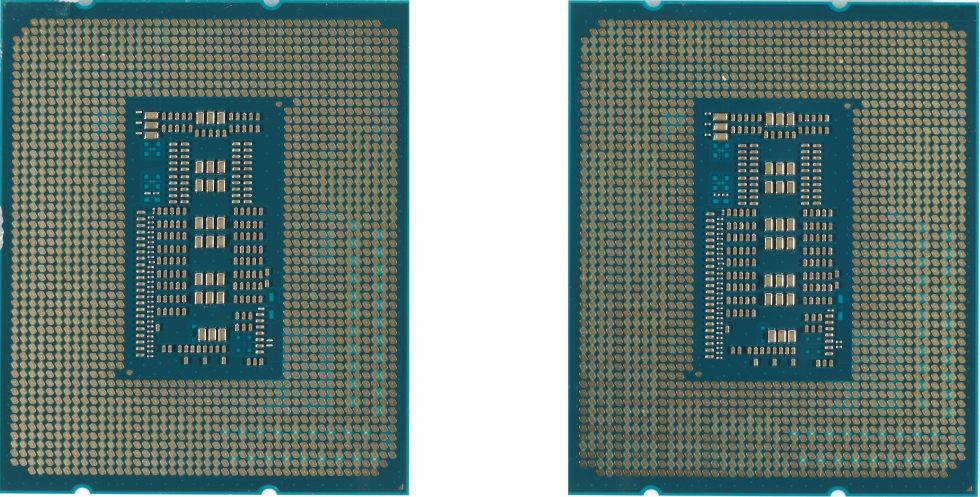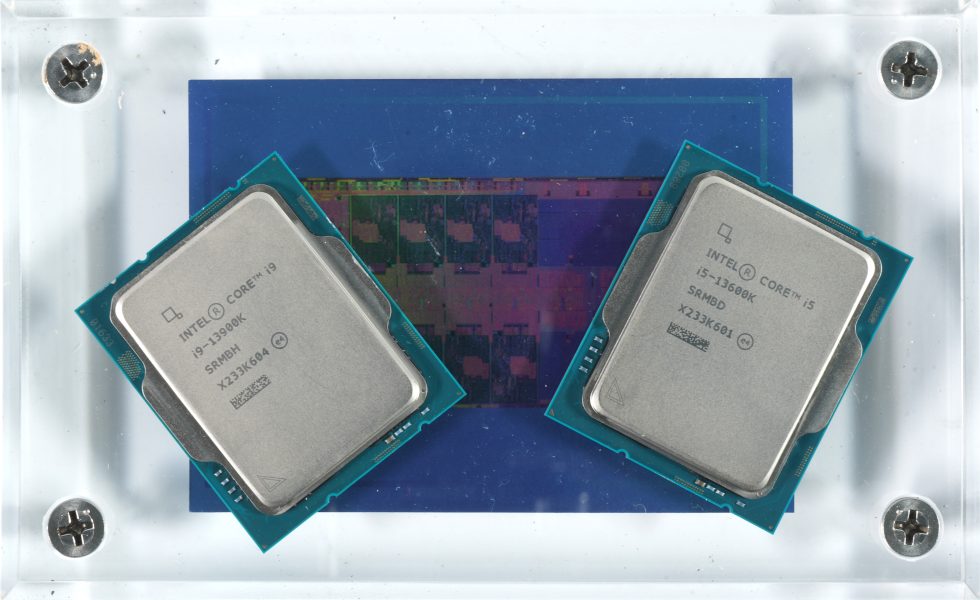With Raptor Lake, Intel now also ends the era of monolithic processors. This of course comes with another decent performance boost and it will be the purpose of this review to compare the new CPUs with AMD’s new Ryzen 7000 family. That is definitely worthwhile, because Intel would quite like to have the so-called gaming crown back. The workstation and creation applications have not been articulated quite as broadly, but I can at least spoil that there were also decent increases in many areas here. Whether it was enough for the whole crown, a larger part or just one prong, we’ll see. I don’t want to spoil the suspense.
As you can see from the intro picture, this time I’m also showing the so-called Influencer Box from Intel, which was kindly provided to me directly by the manufacturer. This includes an Intel Core i9-13900K and a Core i5-13600K, with which the tests were also made. Nevertheless, I also purchased two more retail CPUs for a colleague and privately and also tested them against each other once. The CPUs shipped in the box are definitely not pre-selected Golden Samples, as my own CPU was even a bit more clock-friendly and also a bit cooler. That wasn’t much, but it still shows that there was no preselection here and that you can also get lucky in the CPU lottery.
The new CPUs: Raptor Lake at a glance
In the first wave, Intel announced a total of 6 Raptor Lake CPUs. The Intel Core i9 13900K will have 24 CPU cores (8 P and 16 E) and thus offer 32 CPU threads. The CPU has 36 MB of L3 smart cache and 32 MB of L2 cache, as well as a P-core Max Turbo of 5.8 GHz and an E-Core Max Turbo of 4.3 GHz. It also features the integrated Intel UHD Graphics 770 and offers a total of 20 PCIe lanes. Both DDR5 5600 and DDR4 3200 MHz memories are supported with a maximum memory capacity of 128 GB. The base TDP (PL1) is set to 125W, while the PL2 defaults to 253W. There is also a KF variant that is otherwise identical, but lacks the integrated graphics.
One step down comes the Core i7-13700K, which offers 16 cores (8 P and 8 E) and thus a total of 24 threads and which I still have to retest as soon as it is available. This CPU, which is probably more interesting for normal users, still has 30 MB L3 Smart Cache and 24 MB L2 cache as well as a P-Core Max Turbo of 5.4 GHz and an E-Core Max Turbo of 4.2 GHz. The CPU also has the integrated Intel UHD Graphics 770 and also offers a total of 20 PCIe lanes. Both DDR5 5600 and DDR4 3200 MHz memories are supported with a maximum memory capacity of 128 GB. The base TDP (PL1) is set to 125W, while the PL2 defaults to 253W. There is also a KF variant, which is otherwise identical, but lacks the integrated graphics.
Finally, there is the Core i5 13600K, which is equipped with 14 cores (6 P and 8 E) and a total of 20 threads. This CPU has 24 MB of L3 smart cache and 20 MB of L2 cache and offers a P-core Max Turbo of 5.1 GHz and an E-Core Max Turbo of 3.9 GHz. The CPU also features Intel’s UHD Graphics 770 and also offers 20 PCIe lanes. Both DDR5 5600 and DDR4 3200 MHz memories are supported with a maximum memory capacity of 128 GB. The base TDP (PL1) is set to 125W, while the PL2 defaults to 181W. There is also a KF variant without integrated graphics.
Before I present the innovations that are essential for me on the next page, I want to conclude the introduction with Intel’s slides, which explain some things, but not everything. But again, it’s well worth browsing through because I’ve only filtered out the most important information and smoothed out the marketing wave a bit. Instead of all the manufacturer benchmarks, we fortunately have our own nowadays. But until then, you’ll have to work your way up a bit. Theory can also be exciting!
Presentation Minimized
- 1 - Introduction, preface and CPU specs
- 2 - What's new with Raptor Lake?
- 3 - Test setup and methodology
- 4 - Gaming Performance HD Ready (1280 x 720 Pixels)
- 5 - Gaming Performance Full HD (1920 x 1080 Pixels)
- 6 - Gaming Performance WQHD (2560 x 1440 Pixels)
- 7 - Autodesk AutoCAD 2021
- 8 - Autodesk Inventor 2021 Pro
- 9 - Rendering, Simulation, Financial, Programming
- 10 - Science and Math
- 11 - Power consumption and efficiency
- 12 - Summary and conclusion







































175 Antworten
Kommentar
Lade neue Kommentare
Veteran
1
Mitglied
Veteran
Mitglied
Veteran
Veteran
Veteran
Mitglied
Urgestein
Veteran
Mitglied
Urgestein
Mitglied
1
Urgestein
Mitglied
Urgestein
Veteran
Alle Kommentare lesen unter igor´sLAB Community →